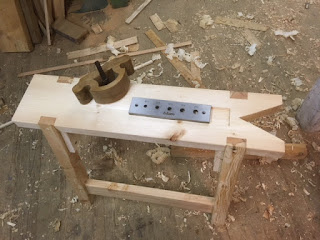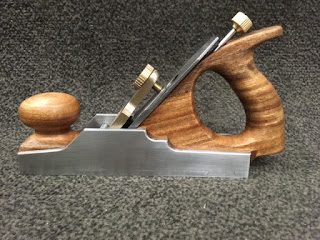I have for a long time been following some general rules of how to categorize a project. These categories help me decide what to do and when.
This is the first time I have tried to write them down and put actual words on the categories, but I have more or less followed them for a long time.
They are all aimed at projects I do at home.
Instead of categories based on form or building method such as chairs, cupboards, chests, turnings, dovetails etc. my categories are primarily based on the weather and secondly the time of day.
Main categories are:
1) Nice dry weather .
2) Light rain or grey weather.
3) Rain.
Off course if a job can be handled in rainy weather, it can technically be handled in fine weather as well, but not necessarily the other way around.
A) Day.
B) Afternoon.
C) Evening.
Day jobs are jobs that require natural light, and perhaps other shops to be open, and also the longest continuous stretch without disturbances.
Afternoon jobs are jobs that can be done when the boys are home from school, they might like to participate in the job, or I have to be able to leave the project at very short notice to help them or to drive them to soccer practice etc.
Evening jobs are jobs are for the time left after eating supper. During the weekdays our family normally eat supper at 5:30 in the afternoon, but it can be as early as 5 PM or as late as 6:30 too.
So a couple of hours in the shop is not unheard of until our youngest needs to be tucked in.
Whenever I have something that I would like to get done while at home, I place that project into one main category and into one or more of the sub categories.
This approach has helped me to work efficiently on multiple projects, and I like being efficient while I am at home.
Ever since I adopted the idea, I have been a lot better at not getting angry that I had to stop one project due to weather issues, because I would know exactly what other project I could switch over to.
My list of projects that I would like to get done while at home this time will get assigned to the following categories:
Bi-annular control of cars: 3)-A
This is a job that I don't plan on doing myself, and the mechanic can work on the cars inside. I just have to drive the cars to him and also later to the actual control.
Repair Volvo Valps: 2)-A
I have a machinery shed in which the Valps are parked. There is a concrete floor, so even with a bit of water I can lay on my back and work on them from beneath.
These jobs are best done without getting too distracted or disturbed.
Install panels and handrail in the small barn: 2)-A
I need to move in and out of the barn a bit with all the boards for the panels, so full rain is not nice for this job.
Make leather belts with Laura: 3)-C
This is a typical evening project. Something to be done in the shop and easy to go to and from during the process. It will most likely be a Friday or Saturday project.
Run the sawmill: 2)-AB
Dry weather is nice but not a complete requirement for running the sawmill. If it is too wet, it is simply unpleasant to go outside all the time with off-cuts and getting a new log etc. The boys like to help sawing with the sawmill, and I can stop anytime to drive and pick them up etc.
Empty the horses boxes and whitewash of the stable: 3)-A
This is a large project, inside save for emptying the wheelbarrow into the trailer.
In addition to these projects that were mentioned in my last post, there is also the ongoing list of perpetual projects, like:
Making and stacking firewood: 1)-AB
Cleaning and organizing the barn: 3)-ABC
Building stuff in the workshop: 3)-ABC
Garden/yard work: 1)-AB
Since the weather is generally bad From October to April, in those months it is especially important for me to have a few projects of each main category, so I won't risk wasting the single day of December without rain on doing indoor stuff.
Does anybody else categorize projects something like this?

















































